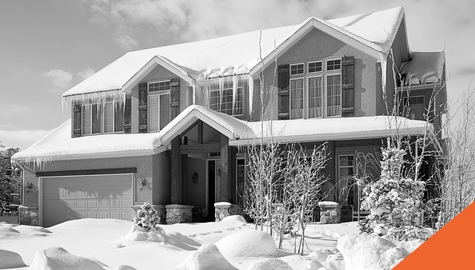Fire Extinguisher Types
Monday, 2 March 2020
Fire is a leading cause of home insurance claims — but fortunately, it’s one of the most preventable. Whether you rent or own your home, or own a commercial property, it’s imperative to have a fire extinguisher onsite. It’s valuable to know the different fire extinguisher types and for which types of fires they can be used. Learn how to use one before you need to, ensure your family or employees know how to use one, and keep them properly maintained so they work if you ever need one.
How Fire Extinguishers Work
There are four main elements to fire: heat, oxygen, fuel, chemical reaction. A fire extinguisher releases chemicals or materials that eliminate one or more of these elements, suppressing the fire.
Types of Fires
- Class A: Fires involving ordinary combustibles such as paper, wood, cloth, rubber, or plastics.
- Class B: Fires involving flammable or combustible liquids, gasses, oil, paints, or lacquer.
- Class C: Fires involving energized (live) electrical equipment such as motors, appliances, or power tools.
- Class D: Fires involving combustible materials such as magnesium, titanium, sodium, and potassium.
- Class K: Fires involving combustible cooking oils, or fats in cooking appliances. (Note: Class K fire extinguishers require special training and probably shouldn’t be used at home.)
Fire Extinguisher Types
In the same way that not all fires are made equal, neither are the fire extinguishers used to treat them. It’s important to evaluate what fire extinguisher types are good for your home or areas in your commercial property. You may need a combination of extinguishers to properly protect your property and workers.
- Water & Foam (Class A) – removes the heat of the fire and the foam removes oxygen.
- Carbon Dioxide (Class B & C) – replaces oxygen in the fire which becomes contained under pressure and creates a cold discharge upon release. Also removes heat of fire.
- Dry Chemical (Class ABC) – stops the chemical reaction of a fire. This fire extinguisher type is the most versatile.
- Wet Chemical (Class K) – removes heat and creates a barrier between oxygen and fuel. The mist cools a fire’s heat and creates a blanket over fuel. This type requires additional training.
- Dry Powder (Class D) – the powder separates the fuel from oxygen or removes heat.
- Water Mist (Class A & C) – is used only to take away heat.
- Clean Agent (Class B & C) – uses less ozone-depleting halocarbon agents and works by interrupting the chemical reaction of a fire.
- Cartridge-Operated Dry Chemical (Class ABC) – interrupts chemical reaction and creates a barrier between the oxygen and fuel.
How to Use a Fire Extinguisher
1. A fire extinguisher should be a part of a full emergency Fire Plan. Make sure your family or employees know the plan and practice it routinely.
2. Learn to use it following the acronym “PASS”
- P – pull the extinguisher’s safety pin
- A – aim the chemical at source of flames (stand 5-6 ft+ from the fire)
- S – Squeeze the trigger and hold, keep it upright
- S – sweep the source of flames until extinguisher runs dry
3. Get your fire extinguishers serviced every 6 years and replace them every 12 years. If it is rechargeable, get it refilled as soon as possible. Some models use a battery to check pressure levels inside and will sound an alert if pressure becomes low rendering it useless.
4. You should NOT use a fire extinguisher if:
- You aren't sure it's the right extinguisher for the type of fire.
- You're too nervous or forget the keyword PASS.
- The fire is bigger than a typical trash can and flames are quickly spreading.
- The fire looks as though it could block your escape route.
Selecting Fire Extinguisher Types for your Home or Business Property
1. Consider the size and weight of the fire extinguisher types. Evidently, the larger the extinguisher, the heavier it will likely be. It will also contain a greater volume of fire-extinguishing chemicals, which will potentially allow for more time and greater effectiveness. With that said, bigger is not always better. If you can’t pick it up and maneuver it properly, it won’t be very useful in a fire.
2. On the labels, you will see numbers beside the A and B class (ie. 3-A:40-B:C). The higher the number on the label, the greater effectiveness the extinguisher has against the respective fire types.
3. Compare rechargeable models to disposable ones.
4. If you are purchasing one for a home, generally a Dry Chemical fire extinguisher is the most versatile, fighting fire classes A, B and C.
5. For a commercial property, be sure to evaluate fire hazards based on the types of chemicals or materials being used in your business. You may require more than one fire extinguisher type.
Be Prepared for a Fire
Fire extinguishers can do a lot to suppress fires, however, they should not be your only line of defense. A Fire Plan is crucial to ensuring the safety of your family or workers. Make sure your smoke detectors are in working order. In the event of a fire, call emergency services. Even if you are able to extinguish the flame, don’t cancel the call but rather leave it to the professionals to determine whether the fire is out.
Place your fire extinguisher near exits in easily accessible location to suppress flames while you escape. In a home, have a fire extinguisher on each floor. On your business property, have extinguishers near potential fire hazards and make sure they are always in plain sight for your staff.
A fire can do a lot of damage to your home or commercial property — even if it’s just a small fire and you put it out quickly. The good news is the majority of home and tenant insurance policies cover damage caused by accidental fires and accompanying smoke. As a business owner, Commercial Property Insurance can protect your buildings, equipment, contents and inventory. To find out exactly how your coverage would respond in the event of a fire, contact your licensed home or business insurance broker or review your policy documents.



